Abstract
Phytochrome was partially purified from etiolated seedlings of Avena sativa L. Several properties of the red-absorbing (PR) and far-red absorbing (PFR) forms of the pigment were compared. The 2 forms could not be shown to differ with respect to their sedimentation velocity in sucrose density gradients, elution volume from Sephadex G-200 columns, binding properties on calcium phosphate, or electrophoretic mobility. PFR, however, was more labile than PR during precipitation with 50% ammonium sulfate. Sephadex G-200 elution diagrams obtained with fresh phytochrome preparations revealed 2 components of different molecular weights, 1 roughly 180,000, and 1 roughly 80,000. Native phytochrome had an absorption spectrum in vivo showing an absorption maximum for PR of 667 nm. Both the large and small forms of phytochrome mentioned above can be maintained with an absorption maximum for PR of 667 nm. However, allowing them to remain for several hours as PFR, even at 4°, shifted this peak to 660 nm. The protein conformational change during phytochrome transformation may be quite small, though the various comparative techniques used do not strictly rule out a fairly large one. The need for maintaining the pigment as PR during all steps of purification, but particularly during ammonium sulfate precipitation is underscored.
Full text
PDF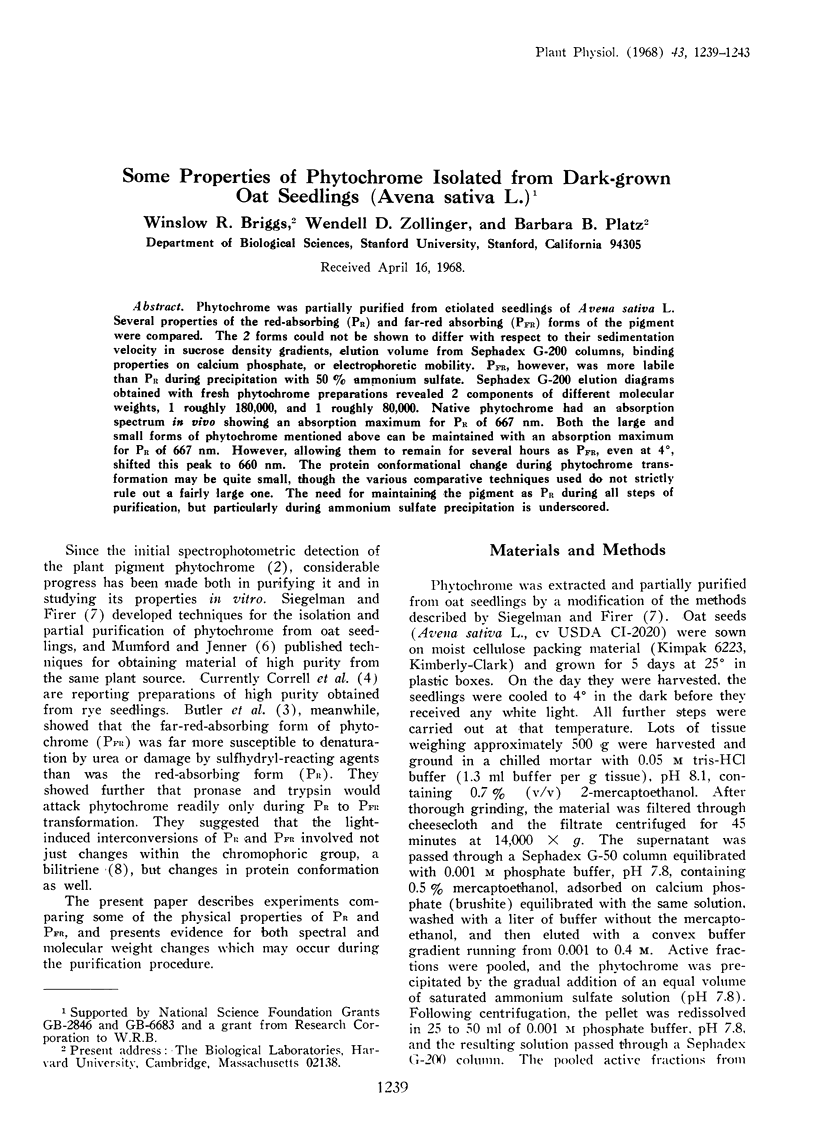
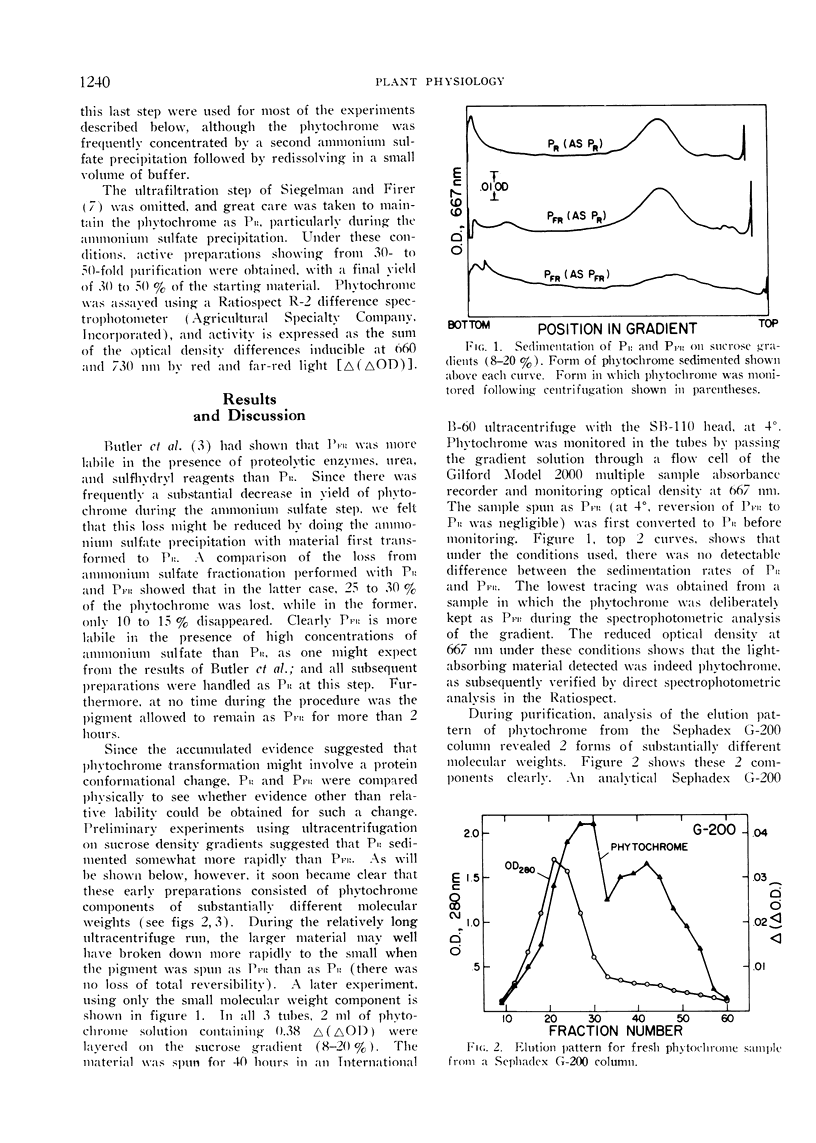
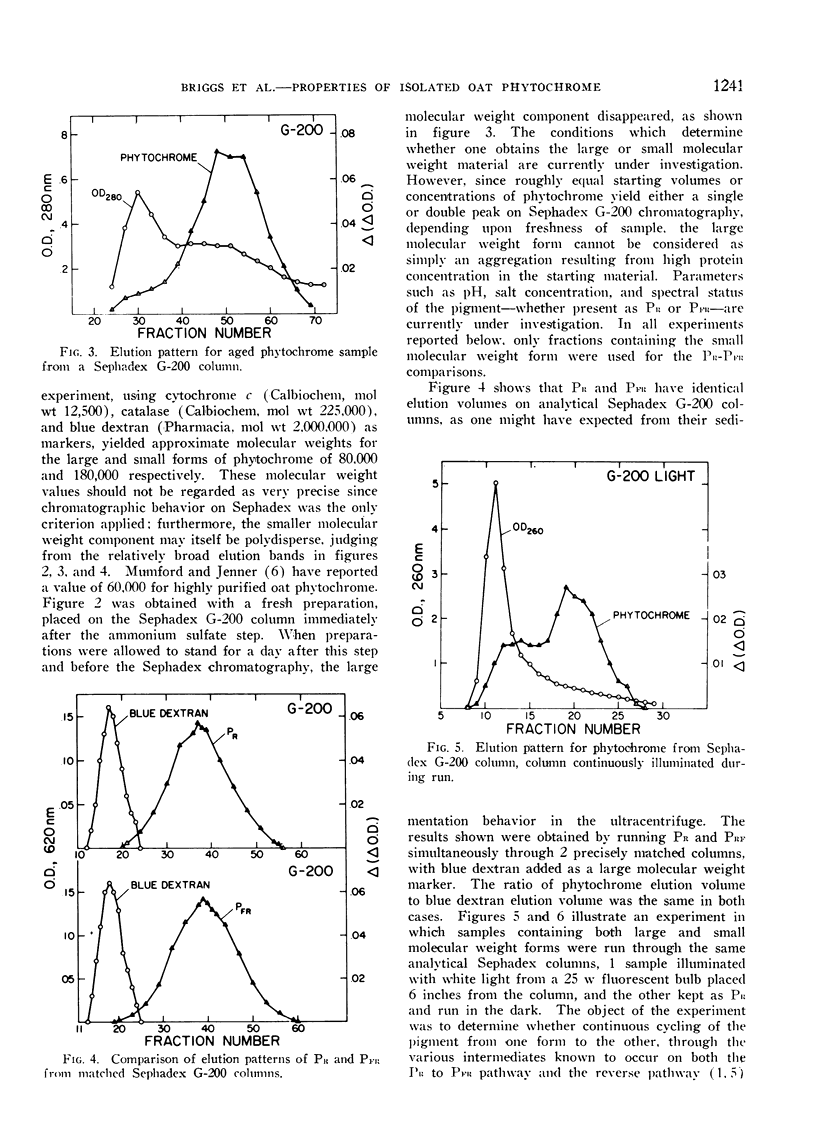
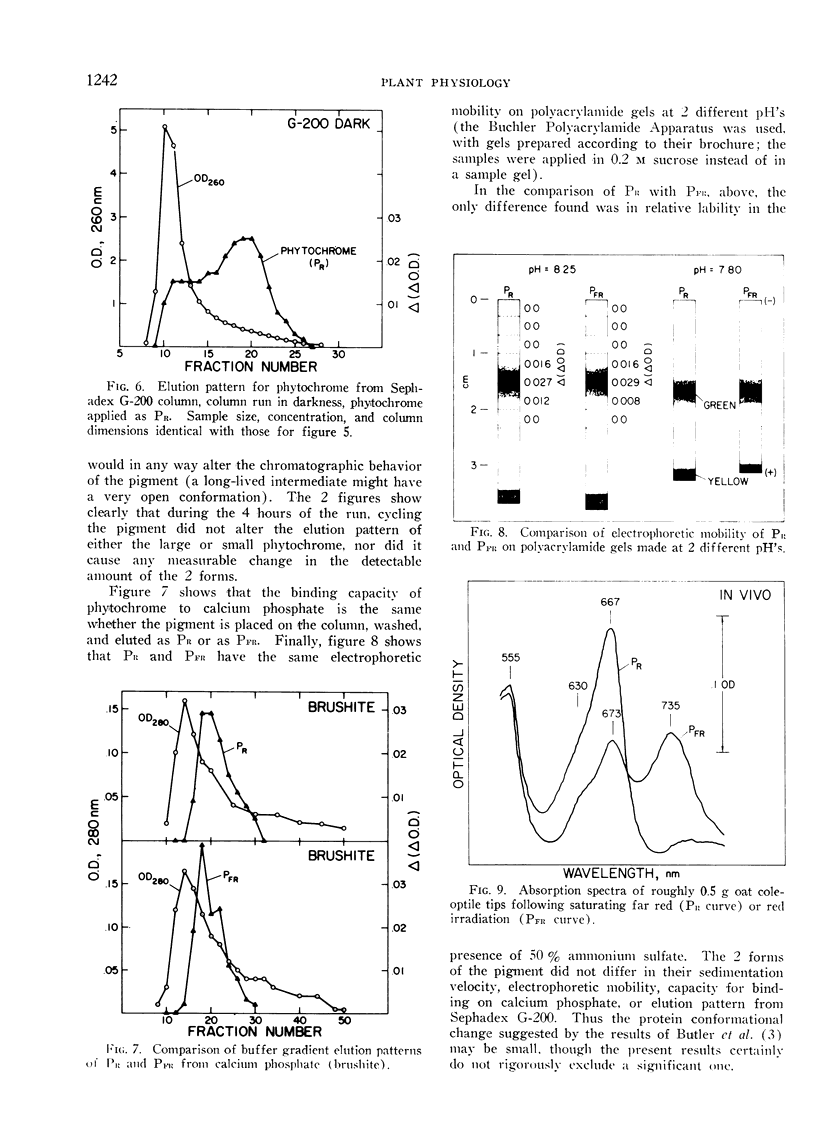
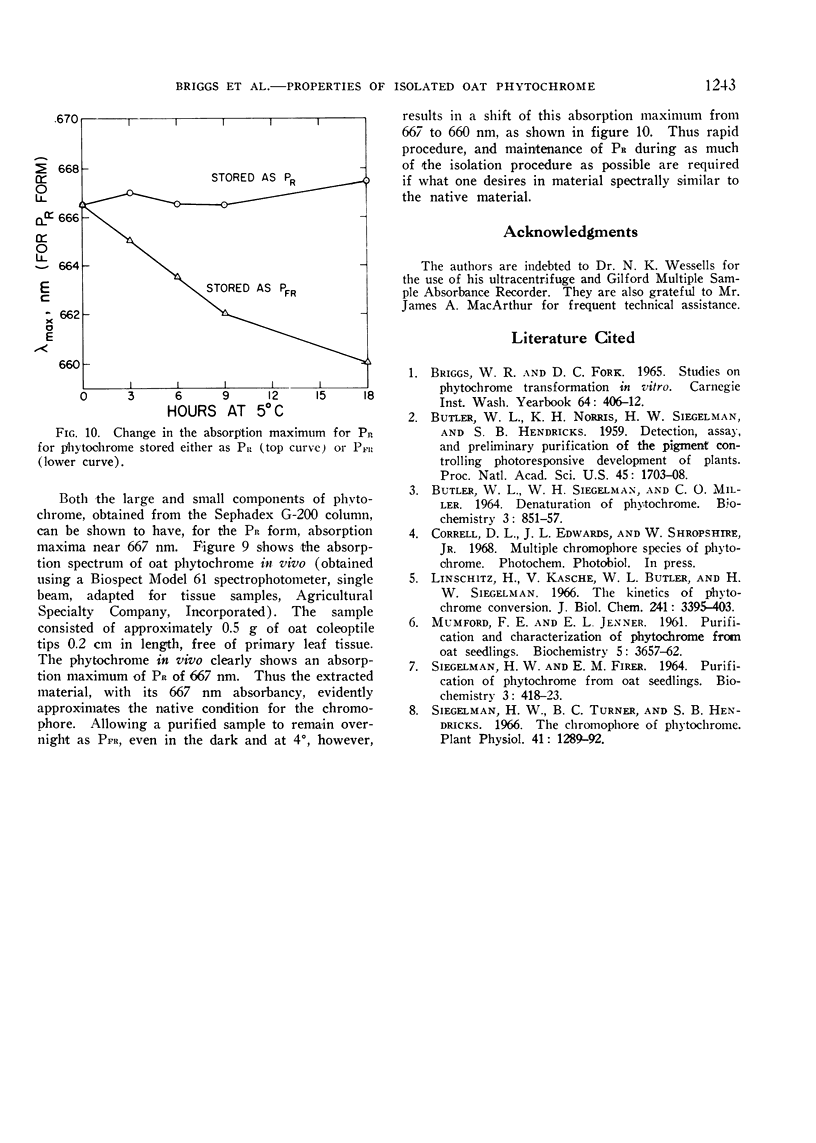
Selected References
These references are in PubMed. This may not be the complete list of references from this article.
- BUTLER W. L., SIEGELMAN H. W., MILLER C. O. DENATURATION OF PHYTOCHROME. Biochemistry. 1964 Jun;3:851–857. doi: 10.1021/bi00894a022. [DOI] [PubMed] [Google Scholar]
- Linschitz H., Kasche V. The kinetics of phytochrome conversion. J Biol Chem. 1966 Jul 25;241(14):3395–3403. [PubMed] [Google Scholar]
- SIEGELMAN H. W., FIRER E. M. PURIFICATION OF PHYTOCHROME FROM OAT SEEDLINGS. Biochemistry. 1964 Mar;3:418–423. doi: 10.1021/bi00891a019. [DOI] [PubMed] [Google Scholar]
- Siegelman H. W., Turner B. C., Hendricks S. B. The chromophore of phytochrome. Plant Physiol. 1966 Oct;41(8):1289–1292. doi: 10.1104/pp.41.8.1289. [DOI] [PMC free article] [PubMed] [Google Scholar]


